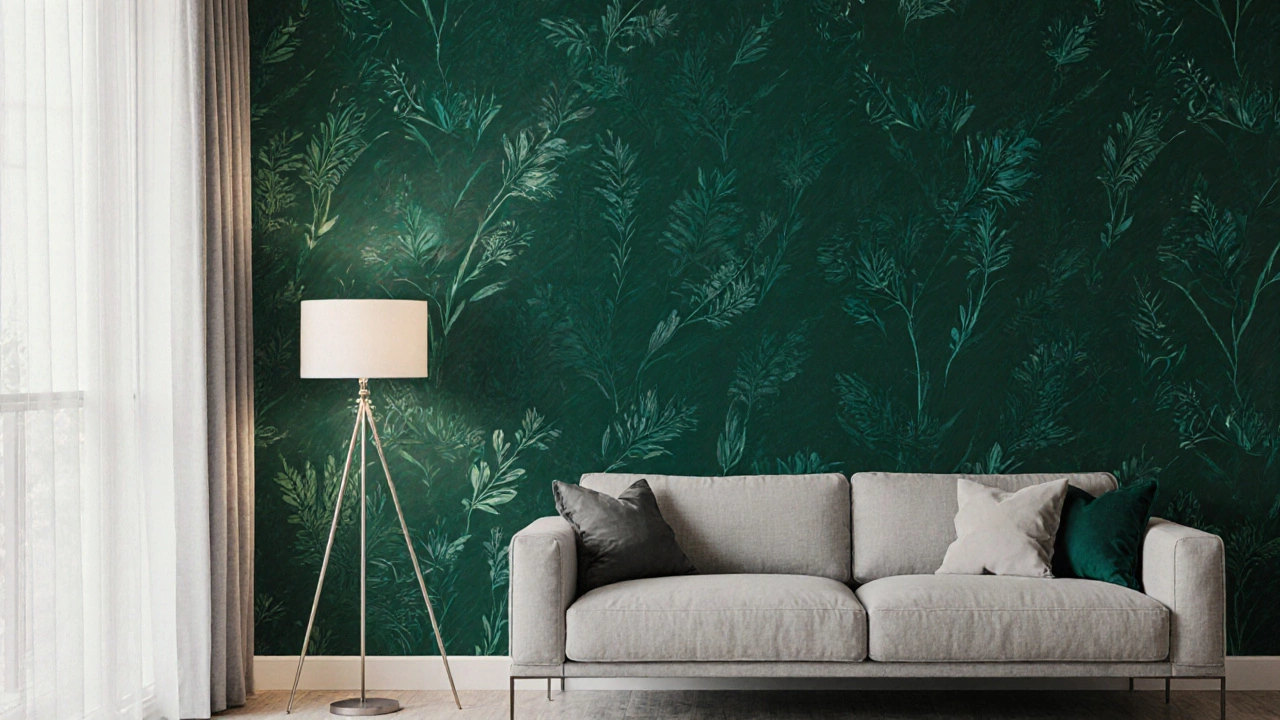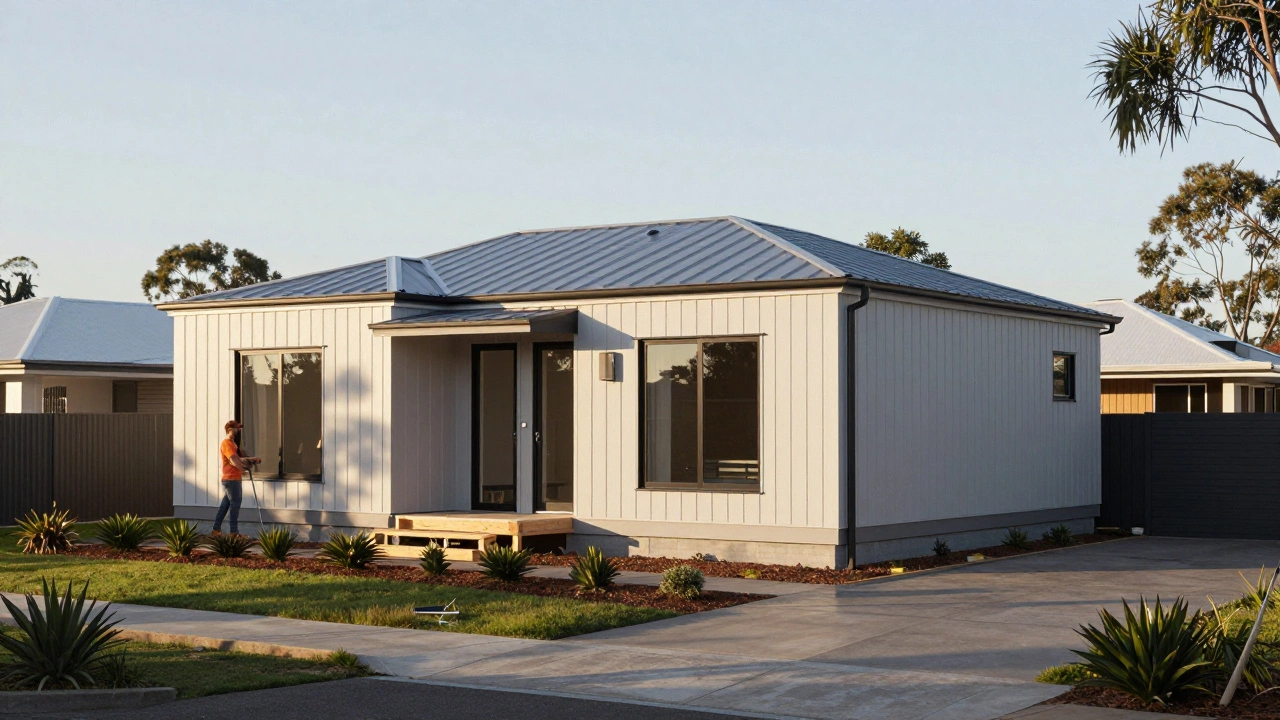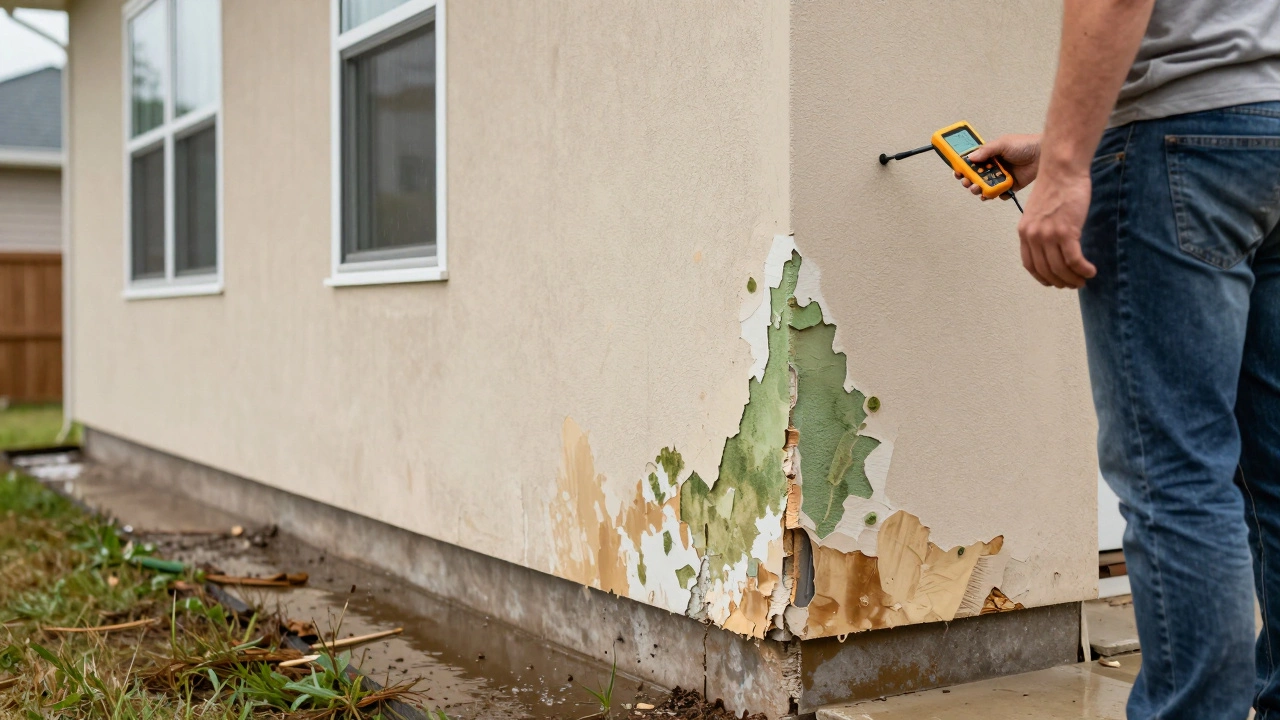Wallpaper Cost Calculator
Compare Wallpaper vs Paint Costs
Based on 2025 trends and real-world pricing
Cost Comparison
Enter room dimensions to see your costs...
It’s 2025, and you’re standing in a freshly painted room. The walls are smooth, the color is neutral, and everything looks... quiet. Too quiet. You feel like something’s missing. Then you remember: wallpaper. Not the old floral nightmare from your grandma’s house. Real wallpaper. The kind that makes a room feel alive.
Turns out, people aren’t just still putting up wallpaper-they’re doing it better than ever. In Melbourne, Sydney, and even small-town New Zealand homes, wallpaper is making a serious comeback. But it’s not the same as the 1980s. Today’s wallpaper is bold, smart, and surprisingly easy to install.
Wallpaper Isn’t Dead-It’s Evolved
For years, wallpaper got a bad rap. Thick, gluey, hard to remove, and prone to peeling at the seams. People called it outdated. A relic. But that version died in the early 2010s. What’s here now is a completely different animal.
Modern wallpaper is thin, breathable, and often made from non-woven fabric that won’t stretch or tear when wet. It’s designed to be stripped cleanly off the wall, leaving no residue. No more soaking paper towels for hours trying to peel off a stubborn border. You just pull. It comes off in one piece.
And the designs? Forget tiny roses and faded damasks. Today’s patterns are graphic, abstract, textured, and even 3D. You’ll find wallpaper that looks like brushed copper, cracked plaster, or hand-painted botanicals with real metallic leafing. Brands like Graham & Brown, Cole & Son, and even local Australian designers like Kite Design Studio are releasing collections that look more like art installations than wall coverings.
Why Now? The Psychology Behind the Return
People are tired of beige. After years of minimalist, all-white interiors, homeowners are craving depth, character, and personality. Wallpaper adds texture and dimension that paint simply can’t match. A bold geometric pattern on one wall can turn a dull bedroom into a focal point. A subtle grasscloth texture in a dining room adds warmth without overwhelming the space.
There’s also a shift in how we use space. With more people working from home, rooms need to do double duty. A home office with a calming, nature-inspired wallpaper feels less like a cubicle and more like a retreat. A child’s room with a cosmic mural doesn’t just look fun-it inspires imagination.
And let’s not forget social media. Instagram and Pinterest are flooded with before-and-after wallpaper transformations. One post from a Melbourne mum showing her 1970s bathroom transformed with a bold, moody green wallpaper got over 800,000 views last year. People see it and think: I can do that.
Peel and Stick: The Game Changer
The biggest reason wallpaper is back? Peel and stick.
Forget paste buckets and wallpaper tables. Today’s self-adhesive wallpaper sticks directly to clean, dry walls. No prep work. No waiting for glue to dry. You unroll it, align it, smooth it out with a squeegee, and you’re done in under an hour.
It’s perfect for renters. Landlords in Melbourne and Brisbane are starting to see more tenants using removable wallpaper because it’s easy to take down before moving out. No damage. No deposit loss. And for homeowners? It’s a low-commitment way to test a bold pattern before going all-in with paint.
High-quality peel and stick lasts 5-7 years if installed correctly. Brands like Tempaper, Brewster, and Wallpops offer waterproof options for bathrooms and kitchens-something you couldn’t say about wallpaper 10 years ago.

Where People Are Using It in 2025
Wallpaper isn’t just for living rooms anymore. Here’s where it’s showing up now:
- Accent walls: Still popular, but now often paired with bold lighting or mirrored shelving to amplify the effect.
- Ceilings: A rising trend. A patterned ceiling adds drama without taking up visual space on the walls.
- Backsplashes: Waterproof wallpaper is being used behind kitchen sinks and in laundry rooms instead of tiles.
- Stair risers: In homes with open staircases, each step is getting a different pattern-creating a playful, gallery-like feel.
- Furniture: Some designers are even using wallpaper to line the inside of bookshelves or the doors of cabinets.
In a recent renovation project in Fitzroy, a couple covered the entire interior of their walk-in wardrobe with a deep navy velvet-textured wallpaper. It didn’t just look luxurious-it made the space feel like a boutique hotel closet.
What to Avoid
Not all wallpaper is created equal. Here’s what still goes wrong:
- Using cheap vinyl on damp walls: Even peel and stick can fail if the wall is humid. Always check for moisture before installing.
- Choosing patterns that are too busy: A small room with a large, complex print can feel claustrophobic. Go subtle in tight spaces.
- Ignoring seam alignment: Misaligned patterns look sloppy. Always measure and mark your wall before hanging.
- Buying from unknown brands: Low-cost wallpaper from big-box stores often fades quickly in sunlight. Stick to reputable suppliers.
Pro tip: Always buy an extra roll. Patterns don’t always line up perfectly, and you’ll need matching pieces for future repairs or touch-ups.

Cost and Value
Wallpaper prices range from $20 to $150 per roll. A standard roll covers about 5.5 square meters. For a typical accent wall (around 10 square meters), you’ll need two rolls-so roughly $40 to $300 total.
Compare that to painting: paint costs $30-$60 per liter, and you’ll need at least two coats. Labor? If you hire someone, painting a room can cost $300-$800. Wallpaper, even professional installation, often runs less-especially if you do it yourself.
And the return on investment? Real estate agents in Melbourne report homes with well-chosen wallpaper sell faster. Buyers remember the character. A unique wall stands out in a sea of identical white boxes.
Real Talk: Is It Worth It?
Yes-if you’re ready to take a risk. Wallpaper isn’t for everyone. If you love clean lines and zero maintenance, stick with paint. But if you want a room that feels personal, layered, and full of soul? Wallpaper delivers something paint never can.
It’s not about nostalgia. It’s about expression. In a world where everything feels mass-produced, wallpaper is one of the last ways to say: This space is mine.
So, do people still put up wallpaper? Absolutely. And they’re doing it with confidence, creativity, and a whole lot of style.
Is wallpaper outdated in 2025?
No. Wallpaper has completely transformed. Modern options are durable, removable, and designed with today’s aesthetics in mind. From bold geometric prints to natural textures like grasscloth and linen, wallpaper is one of the most popular ways to add personality to a room.
Can I put wallpaper in a bathroom or kitchen?
Yes, but only if it’s specifically labeled as waterproof or moisture-resistant. Many peel-and-stick wallpapers now have a vinyl coating that can handle humidity. Avoid installing it directly behind showers or sinks, but backsplashes, powder rooms, and laundry areas work great.
Do I need professional help to install wallpaper?
Not anymore. Peel-and-stick wallpaper is designed for DIYers. All you need is a measuring tape, a smoothing tool, and a steady hand. Traditional paste wallpaper still requires skill, but most people today choose the removable kind, which is much easier. Tutorials on YouTube have made installation simple for beginners.
How long does wallpaper last?
High-quality wallpaper lasts 7-15 years, depending on the material and location. Peel-and-stick versions typically last 5-7 years before needing replacement. Avoid direct sunlight on printed designs-they can fade over time. Textured wallpapers like grasscloth or fabric-backed options tend to hold up better than glossy vinyl.
Can I paint over wallpaper?
Technically yes, but you shouldn’t. Painting over wallpaper often leads to bubbling, peeling, or uneven texture. It also makes future removal harder. If you want to change the look, remove the wallpaper first. It’s cleaner, cheaper in the long run, and gives you a better surface for paint.
What’s the most popular wallpaper style in 2025?
Dark, moody tones with organic textures. Think deep greens, charcoal grays, and navy blues paired with subtle embossing, linen weaves, or hand-painted botanicals. Minimalist patterns with single-color gradients are also trending, especially in bedrooms and home offices. Metallic accents are still popular, but now used sparingly-like a single stripe or border, not an entire wall.








